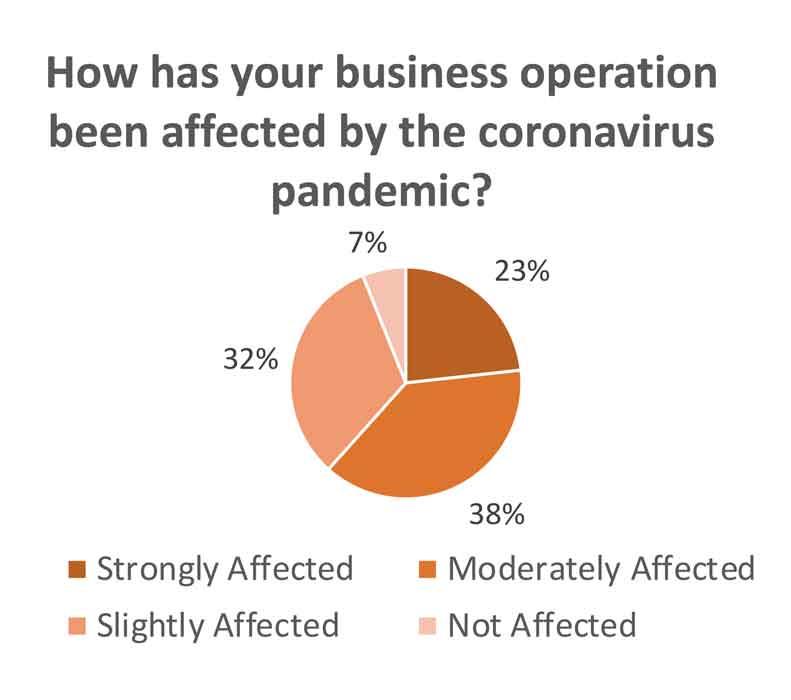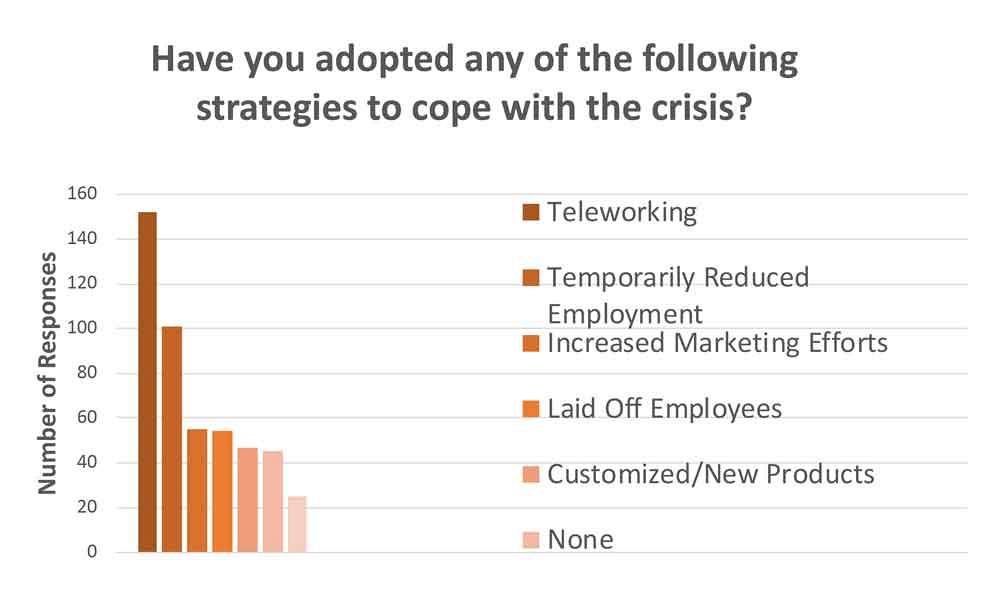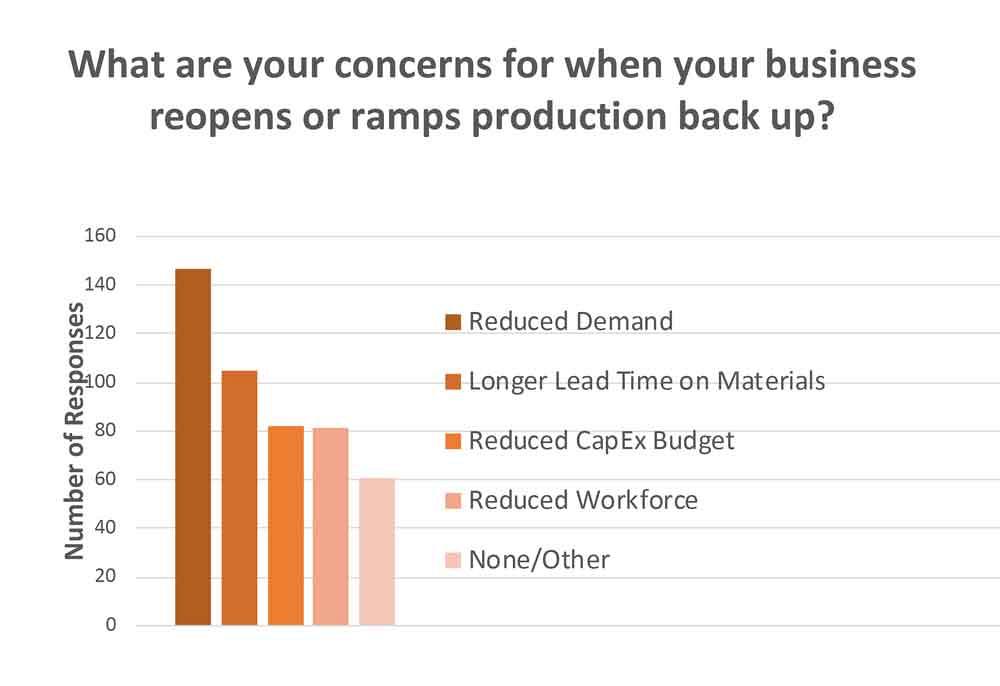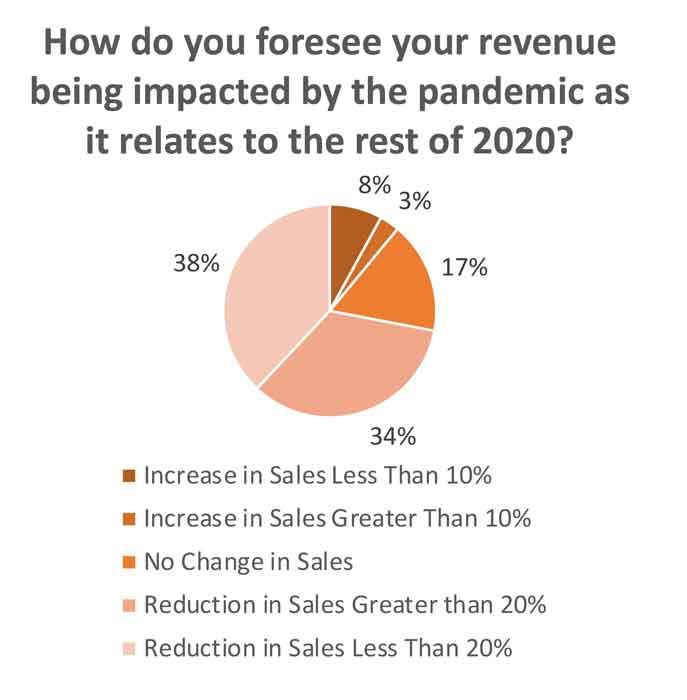Marketing
- FMA
- The Fabricator
- FABTECH
- Canadian Metalworking
Categories
- Additive Manufacturing
- Aluminum Welding
- Arc Welding
- Assembly and Joining
- Automation and Robotics
- Bending and Forming
- Consumables
- Cutting and Weld Prep
- Electric Vehicles
- En Español
- Finishing
- Hydroforming
- Laser Cutting
- Laser Welding
- Machining
- Manufacturing Software
- Materials Handling
- Metals/Materials
- Oxyfuel Cutting
- Plasma Cutting
- Power Tools
- Punching and Other Holemaking
- Roll Forming
- Safety
- Sawing
- Shearing
- Shop Management
- Testing and Measuring
- Tube and Pipe Fabrication
- Tube and Pipe Production
- Waterjet Cutting
Industry Directory
Webcasts
Podcasts
FAB 40
Advertise
Subscribe
Account Login
Search
How fabricators can continue to survive the pandemic
Less business in the pandemic gave metal fab shops a chance to refocus the business
- By Kathy Conrad and Russ Branton
- September 25, 2020
- Article
- Shop Management

The current slowdown gives metal fabricators a chance to refocus their businesses during the pandemic. Getty Images
Editor’s Note: This feature is adapted from the “Surviving the Shutdown: 3 Key Areas of Focus” webinar, presented by Russ Branton of FMCS Co. LLC and Kathy Conrad of Salvagnini America Inc. on June 25.
An industry survey was conducted in the early summer to get a snapshot of where metal manufacturing companies are today. We also included questions about COVID-19 and how the pandemic has affected people’s businesses.
When we look at the 330 people who responded to the survey, we had a good mix across several different industry groups, with the highest percentage classified as involved in sheet metal manufacturing, producing components or assemblies for industrial or consumer applications.
The question asking if they have been affected by COVID-19 reveals that more than 90% of respondents have been and more than 60% have been moderately or strongly affected (see Figure 1). That is a huge number. Of course, many companies deemed nonessential were forced to shut down or severely curtail their operations. Those that remain open are dealing with unplanned staff shortages, altered production schedules, increased safety protocols, and lower overall productivity. Many investments have been delayed or deferred until conditions improve.
Even with these challenges, companies are adapting in several ways, putting their best foot forward to tackle the challenges that they have now (see Figure 2). How are they adapting? The first way is teleworking, which has quickly become the lifeline for staying connected and keeping the business moving forward. We not only see survey respondents taking steps to deal with the lower demand for their services, such as workforce reduction, but also focusing on the business, with new efforts in marketing and new product development.
Clearly the biggest concerns going forward are reduced or uncertain demand, raw material lead times, reduced capital expenditures, and reduced workforce (see Figure 3). The raw material lead time is understandable given that suppliers are open but not fully operational.
Just over 70% of our respondents replied that they anticipated a reduction in sales this year (see Figure 4). As an example, one contract manufacturer of food service equipment indicated that he had seen a 90% reduction in daily shipments to a company that supplied a major fast-food company. That’s a huge number that he was able to partially offset with work from others.
It is to be expected that manufacturing companies are revising forecasts frequently as the year continues. The decrease in sales revenue will certainly challenge many to reduce costs to maintain profit margins.
One bit of encouraging news is that colleagues involved in machine tool sales in Asia reported that their businesses have recovered very quickly and sales activity levels are tracking within 95% of the past two fiscal years. The metrics being followed, including customer inquiries, application reviews, quoting, and order intake, are all in line with the previous two record years. This is also being echoed by colleagues in Europe, as both regions are a little bit ahead of North America in the COVID-19 recovery curve.
What Happens Now?
If there’s a silver lining with this reduction in demand and business activity, it’s that a company can take the time to focus on the business. In particular, a company can now look at three considerations for going forward.

Figure 1
The COVID-19 crisis has affected a large majority of manufacturers, according to a survey conducted by Salvagnini America Inc. in the early summer. Only 23%, however, have been “strongly affected.”
Product Evaluation. The survey revealed that uncertain product demand pervades the market. That’s a primary concern for manufacturers going forward. This is a great opportunity for a manufacturer to evaluate its product mix. It can assess what product manufacturing drives the business and look at it for long-term growth potential and profitability. The company can ask itself, “What do we do well?” and “How are our products going to drive recovery and growth?” In the product assessment criteria, it can obtain input from all departments and seek customer feedback.
This type of discussion can lead to targeting a new market segment, like health and wellness. How can the company capture a large market share, and how does pricing and delivery affect that market share? That’s just a portion of the conversation that also includes considering industry trends and barriers to growth.
Product Redesign. One of the goals for all product reassessment activities is to keep employees engaged and energized and to produce the desired products that meet and exceed customers’ needs. Metal manufacturers should realize that machine tool vendors have seen reduced business activity as well. Now’s a great time to work together on new initiatives, which might include product redesign or new product introduction.
Design for manufacturability (DFM) can be another area of focus. DFM can increase profits on existing products by eliminating costly steps in the manufacturing process through efficient product design.
One example of a recent DFM project occurred in the lighting industry. The part was a 2- by 2-ft. light fixture for office environments (see Figure 5). These assemblies are typically made of three or more sheet metal components, each individually produced through multiple workstations, possibly over a couple of days. By using an automated panel bender, designers were able to create a plan to make the light fixture from a single sheet metal blank in a single machine cycle. It’s now formed in 90 seconds with 36 bends. It’s a part ready for assembly.
This entire DFM project begins in the office. A part designer creates a 3D model, defining what the outside geometry of the finished part is going to look like. The 3D model is then imported into the machine programming software, and the machine tool takes it from there and forms the part.
The machine operator simply calls up the part to be produced, walks over, picks up the punched or laser-cut blank, and presents it to the automated panel bender. While the machine operator was picking up the blank, the machine is setting up the tooling. The operator drops the part on the table and hits start. Everything from that point on is automatic (see Figure 6). The operator is able to do a secondary operation in the work area during the machine cycle. The panel bender takes the blank and rotates to each side for bending, indexing into the tooling where an upper and lower blade system makes a range of motions to produce the bend geometry. The machine works from the outer edge and into the center of the part.
Once the part is bent on one side, the machine raises the tooling, and the part indexes, rotates, and comes in with the second, then third, and finally the fourth side. Again, in one automatic cycle, a final part, which was once a three-part assembly, is completed at a significantly lower unit cost and is ready for delivery to downstream processes.
This DFM and production process has been used in many industries. In the HVAC industry, designers reconfigured a fan housing and reduced the amount of assembly hardware required. Door and cabinet manufacturers have been able to avoid welding thanks to DFM activities creating press-fit assemblies and new designs that integrate secondary components like stiffeners into the panels.
Also with DFM, a manufacturer can reconsider the material being used to make a product. For example, a manufacturer can redesign 20- and 22-ga. parts that make up a cabinet assembly to make them all from the same steel thickness.

Figure 2
Remote working and temporarily reducing employment hours were the two most common strategies that manufacturers have used to deal with the drop in demand that coincided with the pandemic.
The net result with DFM is that it challenges a company’s manufacturing personnel, engineers, and product designers to work together to find a more efficient process. This is something that can be done today or in the next few weeks.
There are other ways a company can accelerate transformation during this time. A metal manufacturer could invest in new fabricating technology; upgrade its ERP system; introduce e-commerce technology for customers; or add new capabilities, such as machining or painting. It also can initiate training programs for employees during this slower time.
Many companies, including 34% of the survey respondents, are considering automation to reduce labor, to increase throughput and quality, and to maximize profits. This could be a fiber laser system with automated material handling, a robotic press brake for unattended or lightly attended production, or automated punching/shearing systems or panel benders capable of unattended operation.
Automation also can be combined into various configurations to provide for optimal processing of any part at any time. High-mix/low-volume production is now the norm. For many companies, automation can provide any product mix on demand and with minimal labor.
Other accelerated initiatives could be using low- or no-cost supplier financing to add new technology while maintaining open lines of credit with commercial lenders for other needs.
A business also could look at renewing its marketing presence. How long ago was your website updated? What can your company do to improve its social media engagement?
Target New Markets. The final consideration for getting back up to speed after this pandemic is targeting new markets and industries that have immediate growth potential. These include industries that are in demand and growing, such as health and wellness, information technology, e-commerce delivery, transportation, HVAC, and contract manufacturing. This type of growth can come in the form of new product introduction, business acquisition, or partnership.
This occurred recently with a major food service equipment supplier that acquired a large manufacturer of sanitizing equipment. Now the company has a complementary product to its ovens, refrigerators, and other commercial kitchen equipment that it produces.
A company can use its existing skills and capacity to supplement the production of others. For instance, how can your company capitalize on the reshoring activity that likely will occur in the coming months?
Company leaders also can leverage and use their contacts to seek out potential needs. For example, a company that owns convenience stores contacted Salvagnini to find out who could fabricate point-of-sale shields. Salvagnini referred them to a company that was able to do the work and satisfy the needs during the same week.

Figure 3
Coming out of the pandemic, manufacturers rank reduced customer demand as their No. 1 concern.
A manufacturer can put together an in-house team that meets biweekly to identify new opportunities. The team could connect and interact with stakeholders, investigate production parameters, and respond with proposals to secure new orders.
It’s clear that there’s a lot of uncertainty going forward. To deal with this, companies need to be present and proactive. They can’t wait for the return to normal. They need to create a new normal and ensure the organization’s continued success.
About the Authors


Related Companies
subscribe now

The Fabricator is North America's leading magazine for the metal forming and fabricating industry. The magazine delivers the news, technical articles, and case histories that enable fabricators to do their jobs more efficiently. The Fabricator has served the industry since 1970.
start your free subscription- Stay connected from anywhere

Easily access valuable industry resources now with full access to the digital edition of The Fabricator.

Easily access valuable industry resources now with full access to the digital edition of The Welder.

Easily access valuable industry resources now with full access to the digital edition of The Tube and Pipe Journal.
- Podcasting
- Podcast:
- The Fabricator Podcast
- Published:
- 04/16/2024
- Running Time:
- 63:29
In this episode of The Fabricator Podcast, Caleb Chamberlain, co-founder and CEO of OSH Cut, discusses his company’s...
- Industry Events
16th Annual Safety Conference
- April 30 - May 1, 2024
- Elgin,
Pipe and Tube Conference
- May 21 - 22, 2024
- Omaha, NE
World-Class Roll Forming Workshop
- June 5 - 6, 2024
- Louisville, KY
Advanced Laser Application Workshop
- June 25 - 27, 2024
- Novi, MI
































